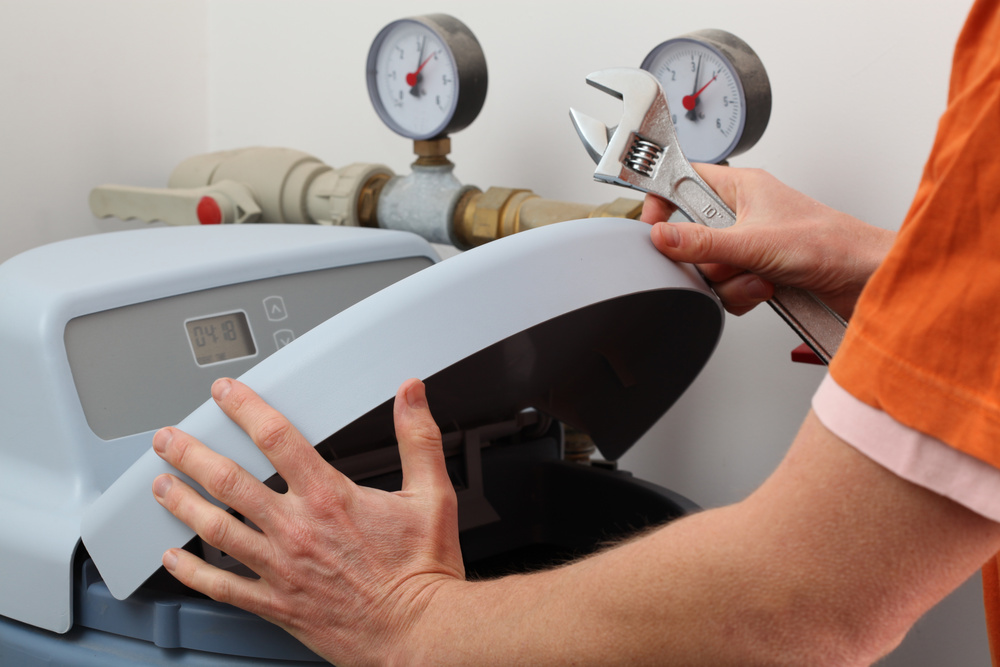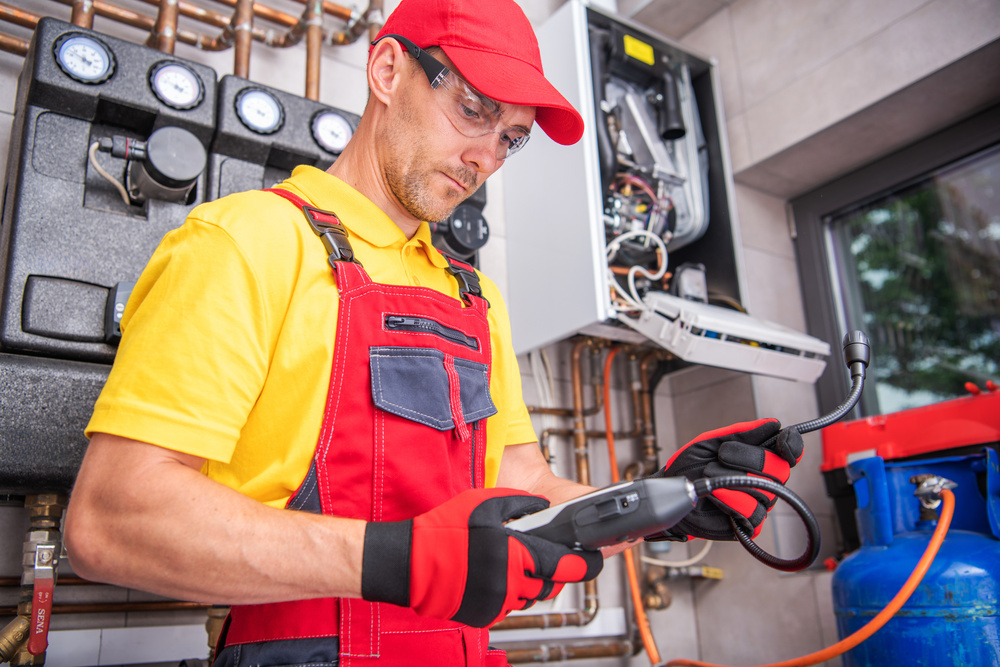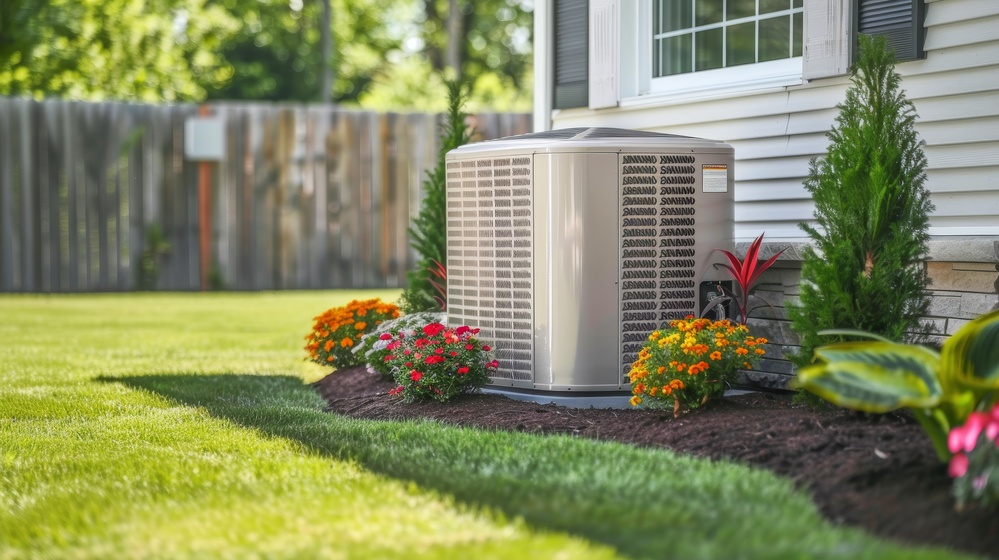Home Energy Efficiency Tips to Save Money On Your Energy Bill

By Thomas Terry, SameDay Heating & Air
High energy bills can be frustrating. Luckily, you can make simple changes to cut costs and conserve energy. Improving the energy efficiency in your home doesn’t have to be complicated. Whether you want to upgrade your appliances or fix air leaks doesn’t matter. The practical tips below will help you reduce energy waste throughout your home. You’ll enjoy lower bills and a more comfortable living space.
Why is My Energy Bill so High?
Many homeowners wonder why their energy bills are so high. The answer often lies in a combination of small inefficiencies. Heating and cooling systems, outdated appliances, and drafty windows or doors are among the biggest culprits. Even small things like leaving lights on or overusing water can drive costs.
To address high energy costs, take a closer look at your home’s energy use. Identifying problem areas to target for improvements can reduce energy usage. Some examples include upgrading systems or sealing air leaks. Small changes add up to big savings, both financially and environmentally.
HVAC Best Practices for Energy Efficiency
Heating and Cooling
Heating and cooling account for a large portion of energy use in most homes. Simple changes can make your system more efficient and reduce energy waste.
Regular maintenance is also key to keeping your system running well. Changing air filters and cleaning vents prevent unnecessary strain on your HVAC system, and routine check-ups are also essential.
Convert to Clean Heating and Cooling
Upgrading to modern heating and cooling systems can reduce energy waste. Clean technologies like heat pumps use less energy and keep a comfortable temperature in your home. Solar–powered systems are also great for this purpose. These systems are more efficient and environmentally friendly, making them a smart choice for cutting energy costs.
Seal and Insulate
Drafts and poor insulation are common causes of energy loss in homes. Air leaks around windows, doors, and attics force your heating and cooling system to work harder. This wasted energy leads to higher bills. Sealing these leaks with weather stripping or caulk is an easy way to make your home more energy-efficient.
Adding insulation to walls, attics, and basements also prevents energy loss. Insulation regulates indoor temperatures, so your HVAC system doesn’t have to work as hard. These simple upgrades make a noticeable difference in reducing energy waste and cutting monthly costs.
Upgrade Doors and Windows
Older windows and doors often allow air to escape, making it harder to maintain a consistent temperature in your home. Upgrading to double-pane or triple-pane windows and installing insulated doors solves this problem. These options are designed to keep indoor air in and outdoor air out, reducing the workload on your heating and cooling system.
Use Ceiling Fans to Supplement Heating and Cooling
Ceiling fans are a cost-effective way to make your home comfortable year-round. In the summer, set your fan to rotate counterclockwise to create a cooling breeze. This way, you rely less on your air conditioning. In winter, reverse the direction to push warm air down and distribute heat more evenly.
Using ceiling fans strategically reduces the demand on your heating and cooling systems. Because fans use much less energy than HVAC systems, they lower energy use and costs. They are a simple yet powerful tool for improving comfort and reducing expenses.
Lighting
Lighting is a vital part of your home. It can also be a hidden source of high energy usage. Making thoughtful changes reduces energy waste without sacrificing brightness or comfort. Simple steps like using natural light during the day or upgrading to energy-efficient bulbs greatly impact.
Let the Light In
Take advantage of natural daylight to reduce the need for artificial lighting during the day. Open blinds and curtains to let sunlight fill your rooms. Kitchens, living rooms, and home offices are especially important here. Relying on sunlight when available lets you reduce electricity use and brighten your home.
Switch to Energy-Efficient Lighting
Replacing old incandescent bulbs with modern, energy-efficient alternatives is one of the easiest ways to reduce energy waste. LED and compact fluorescent bulbs use a fraction of the electricity traditional bulbs require. They also produce the same amount of light and last longer. You won’t need to replace them as often.
Focus on replacing the bulbs in high-traffic areas of your home, such as the kitchen, living room, and bathrooms. These are also the spaces where lights are on the most. Upgrading here will give you the most savings. These bulbs will lower your energy bills and let you enjoy a brighter, more efficient home.
Automate Lighting
Smart lighting systems make it easy to reduce unnecessary energy use. Motion sensors and timers ensure lights are only on when needed, and dimmers let you adjust brightness levels to match your activities. These features are particularly useful for areas like hallways, bathrooms, and outdoor spaces, where lights are often left on by accident.
Smart bulbs that can be controlled remotely or through voice commands are also convenient. These systems let you schedule lights to turn on and off automatically, even when you’re not home. Automating your lighting setup is a simple and efficient way to reduce energy usage.
Water Heating and Usage
Water heating is another major contributor to energy costs in your home. There are simple steps you can take to make it more efficient. Small changes can significantly reduce water usage and the energy needed to heat it. These changes include upgrading your water heater or installing low-flow fixtures. Also, water-saving habits can lower your bills and conserve this valuable resource.
Up Your Water Heating Efficiency
Older water heaters can waste much energy, especially without regular maintenance. Upgrading to a high-efficiency water heater is a smart way to cut costs. Tankless or solar water heaters are two popular examples. They heat more water and use less energy than traditional storage tank models.
Lower the temperature on your water heater to 120°F for even more significant savings. This reduces energy use without sacrificing comfort. It also extends the life of the system. Simple steps like insulating your water heater and pipes can also prevent heat loss. These steps ensure your system runs efficiently.
Take Shorter Showers
Taking shorter showers is one of the easiest ways to reduce water and energy waste. Heating water requires a lot of energy, and using less hot water translates to lower energy bills. Try timing your showers or switching to a low-flow showerhead to reduce water usage without compromising water pressure.
Conserve Water with Low-Flow Bathroom Fixtures
Low-flow fixtures like showerheads and toilets are designed to use less water without sacrificing performance. These fixtures can reduce the amount of water your household uses daily. This, in turn, lowers the energy needed to heat it.
Replacing old fixtures is an affordable upgrade that pays off quickly in terms of water and energy savings. Plus, many of these products are easy to install yourself. It’s a simple way to improve efficiency in your home. With low-flow fixtures, you can conserve resources while enjoying the same level of comfort.
Fix Plumbing Leaks Promptly
Even small plumbing leaks waste a surprising amount of water and increase energy bills. A dripping faucet or leaking pipe increases water usage and requires your water heater to work harder if the leak involves hot water.
Addressing leaks promptly prevents unnecessary waste and protects your home from water damage. If you notice a persistent drip or suspect a hidden leak, it’s best to call a professional plumber to assess the situation. Regular maintenance and quick repairs are key to keeping your home’s water system efficient and cost-effective.
Appliances and Electronics
Appliances and electronics are an essential part of everyday life. They can also contribute to higher energy bills if not used efficiently. Upgrading to energy-saving models and adjusting how and when you use them are just some ways to make your appliances and electronics work smarter, not harder.
Cook the Cleaner and Greener Way
Making energy-efficient choices in the kitchen can reduce your energy use. For example, you can use smaller appliances like toaster ovens or microwaves instead of your oven. These devices use less energy but still get the job done.
Also, when cooking on the stovetop, use lids on pots and pans to retain heat and cooking time. Always run full loads to maximize your dishwasher’s efficiency. These small changes in your cooking habits save energy and keep meal prep convenient.
Upgrade to Energy-Efficient Appliances
Old appliances often use far more energy than their modern, energy-efficient counterparts. Upgrading to ENERGY STAR-certified appliances can lower monthly energy costs and improve performance and reliability.
Focus on replacing major energy users like refrigerators and washing machines. These appliances run frequently and consume the most power. The upfront cost of new appliances may seem high. However, the long-term savings and reduced energy usage make them a worthwhile investment.
Optimize Appliance Placement
The placement of your appliances impacts their efficiency. For example, placing your refrigerator next to a heat source like an oven or in direct sunlight forces it to work harder to maintain a cool temperature. Ensure your refrigerator is in a cool, shaded spot so it runs more efficiently.
Similarly, leave enough space around appliances like dryers and refrigerators for proper ventilation. Good airflow prevents overheating and ensures they’re at peak performance. Optimizing the placement of your appliances improves their efficiency and reduces energy consumption.
Reduce Phantom Load
Many electronics consume power even when they’re turned off. This is known as phantom load or standby power. Items like chargers and gaming consoles can quietly add to your energy bill.
Unplug devices when they’re not in use to combat phantom load. You can also invest in smart power strips that cut power to multiple devices with one switch. Smart plugs and timers manage energy use for devices that you often use. Reducing phantom loads is a simple and effective way to lower energy waste without disruption.
Harness Renewable Energy
Renewable energy options are becoming increasingly accessible for homeowners. These options offer a sustainable way to lower energy costs and reduce environmental impact. Solar panels and solar-powered outdoor lighting are two options that harness the power of nature to meet your energy needs.
Harness the Power of the Sun
Solar panels are a popular and effective way to generate clean energy for your home. They lower your electricity bills by producing power from the sunlight. Many states and municipalities also offer tax incentives or rebates to offset the upfront installation cost.
Use Solar-Powered Outdoor Lighting
Solar-powered outdoor lighting is an affordable, low-maintenance way to illuminate your property without adding to your energy bill. These lights use built-in solar panels to change during the day. They then provide soft, consistent lighting throughout the night.
Use solar lights for pathways, patios, or even decorative landscaping. They don’t rely on your home’s electricity, so they’re easy to install and require minimal upkeep. Homeowners looking for simple ways to incorporate renewable energy make solar lighting an excellent starting point.
Home Audits and Maintenance
Keeping your home energy efficient requires regular audits and maintenance. Identifying problem areas and staying on top of routine care lets you reduce energy waste. You will also extend the lifespan of your systems. Simple tasks like replacing filters and scheduling inspections make a big difference in improving your home’s efficiency.
A professional home energy audit is one of the best ways to pinpoint areas where your home may lose energy. You’ll want to combine this with ongoing maintenance of key systems like your HVAC. This proactive approach ensures your home operates at its best year-round.
Do a Home Energy Assessment
A home energy assessment is a comprehensive evaluation that identifies inefficiencies in your home. A professional will inspect areas like insulation, windows, and doors. They will also look at your appliances to find where energy is being wasted. They can then recommend upgrades and repairs tailored to your home’s needs.
Inspect and Replace Filters
Dirty filters in your HVAC system can restrict airflow, making your system work harder and use more energy. Regularly inspecting and replacing filters is a quick, low-cost way to maintain efficiency and ensure clean air circulation throughout your home.
Most filters should be replaced every one to three months, depending on your system and how often it’s used. Clean filters improve energy efficiency and extend the lifespan of your heating and cooling equipment, saving you money on repairs and replacements in the long run.
Maintain Your Heating and Cooling Systems
Routine maintenance keeps your HVAC system running efficiently. Annual tune-ups by a professional technician identify potential issues before they become costly repairs. Tasks like cleaning coils and checking refrigerant levels ensure your home system runs at peak performance.
In between professional visits, keep up with simple tasks like clearing debris around outdoor units and ensuring vents are unobstructed. Proper maintenance reduces energy waste and keeps your home comfortable throughout the year.





